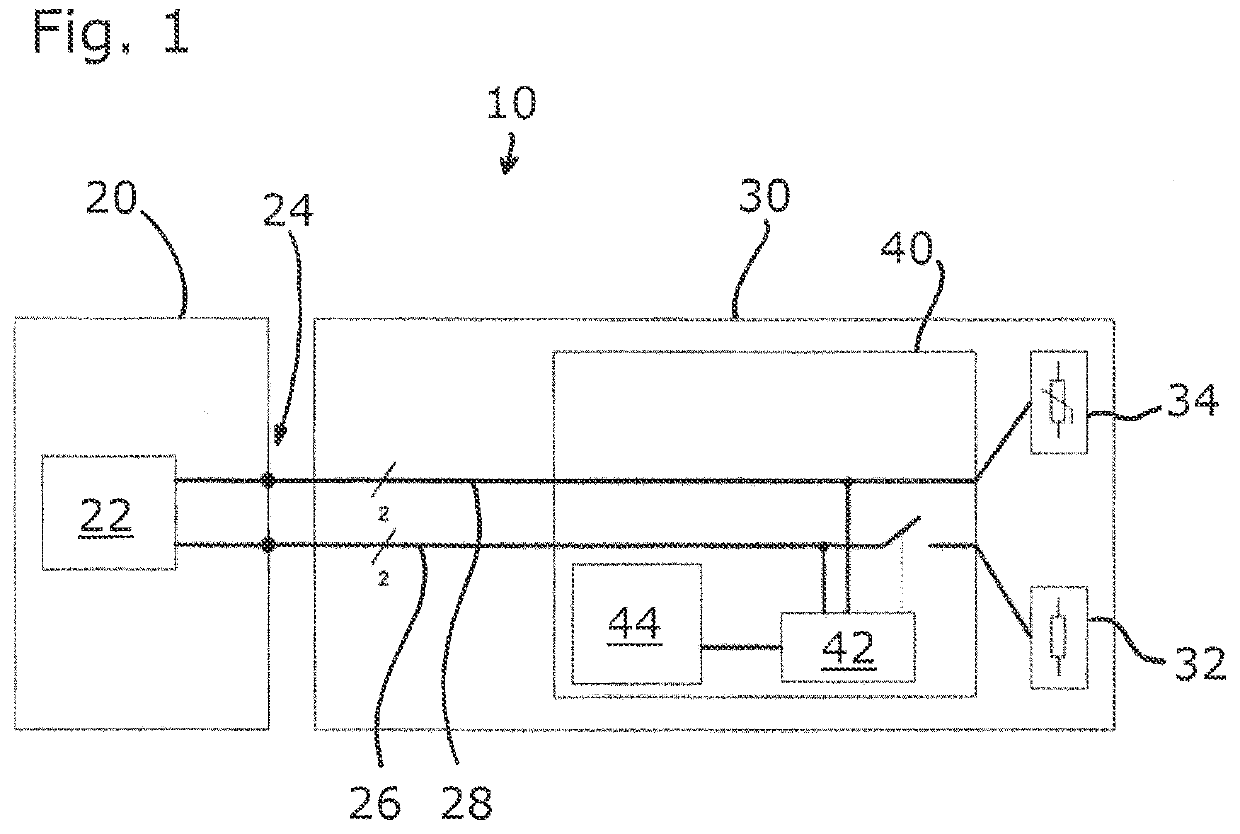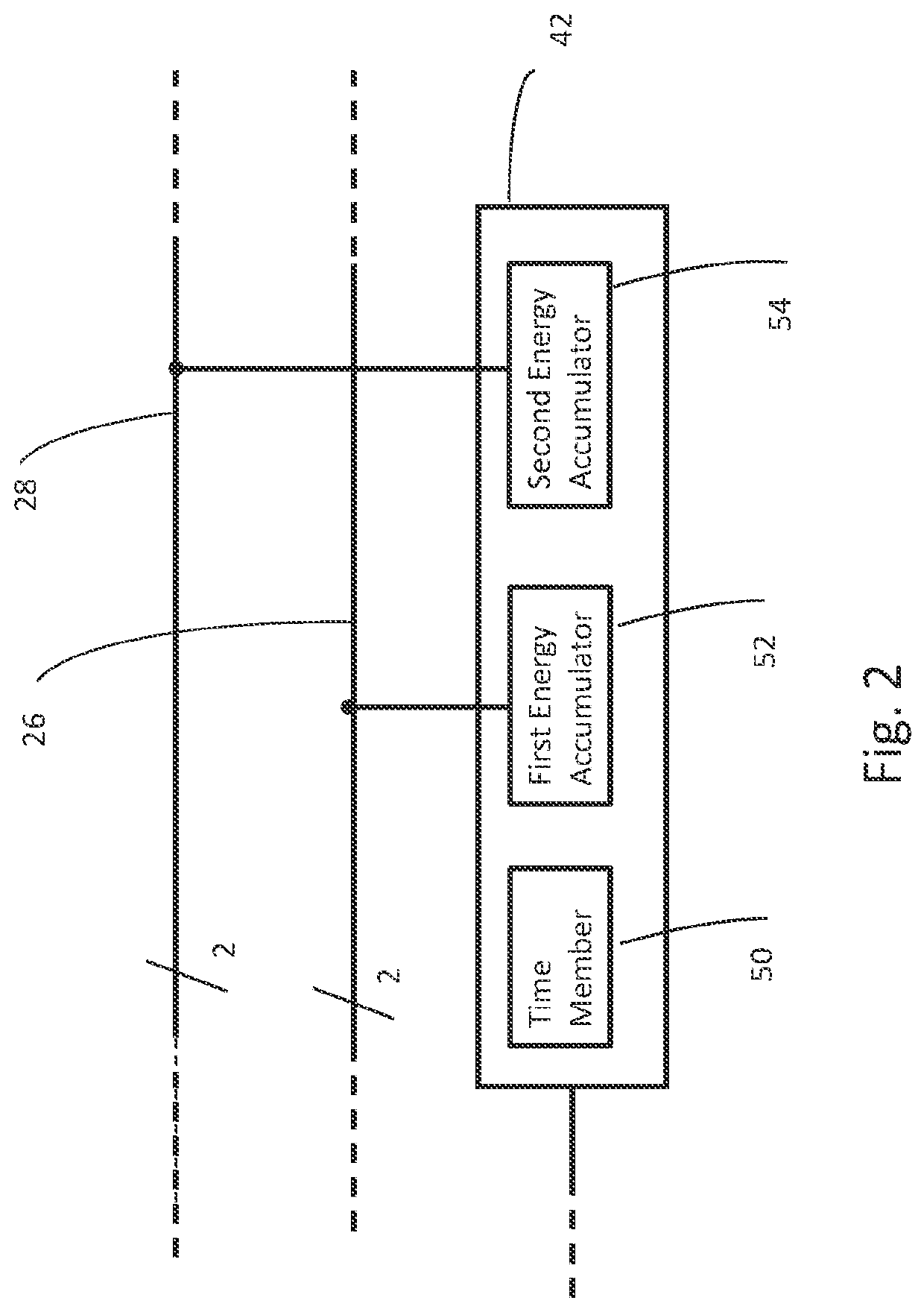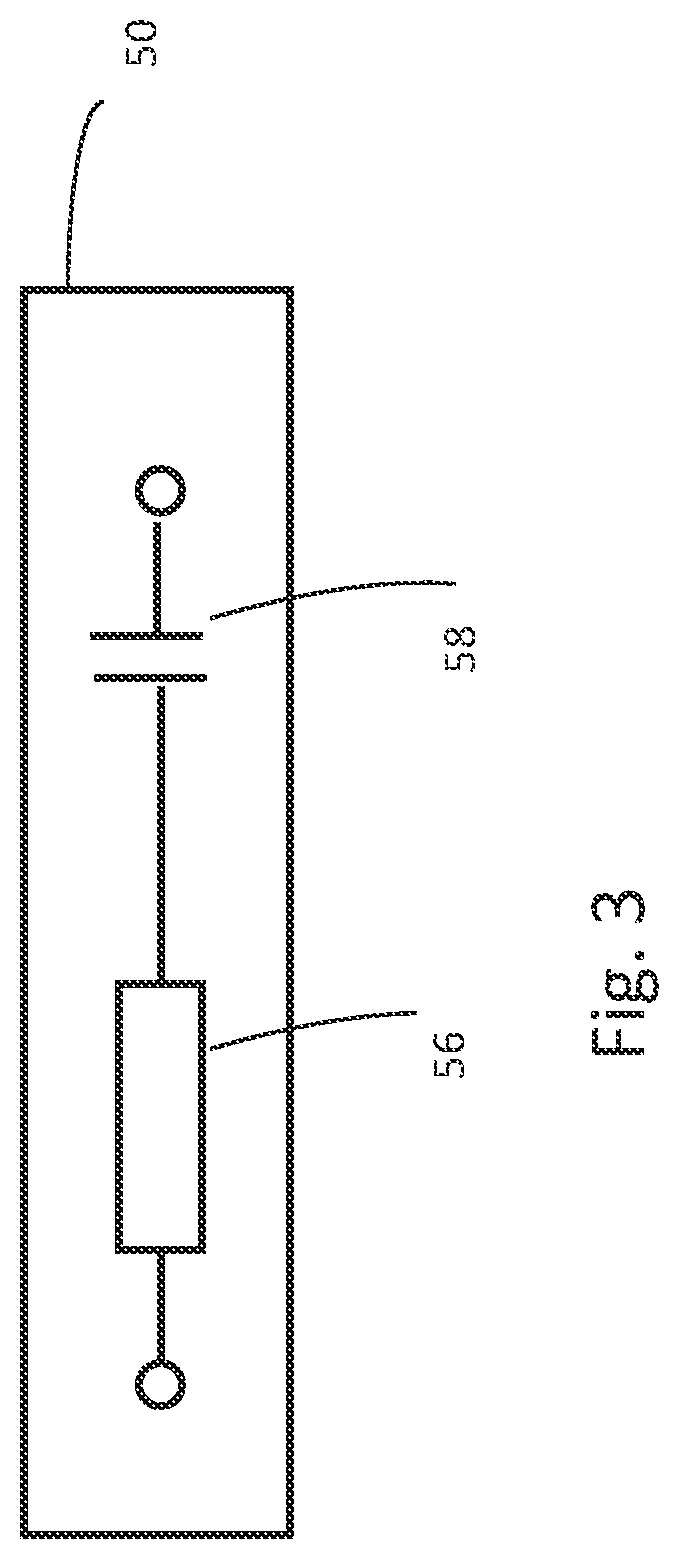Method for operating the heating system of an endoscope, heating system of an endoscope, and endoscope system
a heating system and endoscope technology, applied in the field of endoscope heating system, heating system of endoscope, and endoscope system, can solve the problems of faulty calibration, unable to perform endoscope examination, and thermistors developing various malfunctions
- Summary
- Abstract
- Description
- Claims
- Application Information
AI Technical Summary
Benefits of technology
Problems solved by technology
Method used
Image
Examples
Embodiment Construction
[0034]FIG. 1 schematically shows an endoscope system 10, which comprises an endoscope 30 and a central unit 20, which is configured for the supply and control of the endoscope 30. The central unit 20 comprises a supply unit 22, which is connected via two two-core conductors 26, 28 to a distal heating element 32 and a distal temperature sensor 34, such as a thermistor with a negative temperature coefficient. The heating element 32 can be a heating resistor. The connection is implemented via a coupling interface 24 in which the conductors 26, 28 in the endoscope are connected to external conductors that lead to the supply unit 22. The small numerals 2 below the slashes which cross the two conductors 26, 28 near the connecting lines to the reference signs symbolize the two-core nature of the two conductors 26, 28.
[0035]The elements described thus far form the traditional heating system of an endoscope the distal region of which is shown in FIG. 1 on the right. The heating element 32 an...
PUM
 Login to View More
Login to View More Abstract
Description
Claims
Application Information
 Login to View More
Login to View More - R&D
- Intellectual Property
- Life Sciences
- Materials
- Tech Scout
- Unparalleled Data Quality
- Higher Quality Content
- 60% Fewer Hallucinations
Browse by: Latest US Patents, China's latest patents, Technical Efficacy Thesaurus, Application Domain, Technology Topic, Popular Technical Reports.
© 2025 PatSnap. All rights reserved.Legal|Privacy policy|Modern Slavery Act Transparency Statement|Sitemap|About US| Contact US: help@patsnap.com



